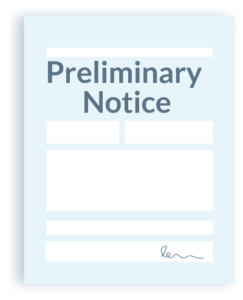
The Washington Little Miller Act ensures that project participants get paid on public construction projects. On projects of a certain size, the prime contractor must post a payment bond on the project as a guarantee of payment to subs, suppliers, and other lower-tiered project participants. If a protected party isn’t paid for labor or materials provided to the project, they will have the right to make a claim against the payment bond to recover payment.
This post will tell you, step-by-step, how to make a Washington payment bond claim to ensure you get paid what you’ve earned.
Step 1: Understand your right to make a Washington payment bond  claim
claim
Whether you’re in Washington or elsewhere, the first step in making a payment bond claim is figuring out whether (a) the project is (or required to be) bonded, and (b) whether or not you are protected party under your state’s Little Miller Act.
Does the project require a payment bond to be posted?
The WA Little Miller Act can be found in RCW §39.08.010 et seq. Under these provisions, a payment bond and a performance bond must be posted by the general contractor on any government-funded construction project whose contract amount is $150,000 or more.
The amount of the bond depends on what type of project it is. On state construction projects, the payment bond must equal the total amount of the contract. While on local/municipal public works projects, the bond amount must be at least 25% of the construction contract price.
Is the work performed protected by the WA Little Miller Act?
The state of Washington provides bond claim protection to a broad array of project participants. This includes subcontractors, material suppliers, laborers, and equipment lessors of any tier. However, suppliers to suppliers are not covered under the Washington bond claim laws.
If you haven’t already, request the bond information
On any public or private project with a payment bond, it’s generally a good idea to request the bond at the beginning of the project. Parties tend to be more agreeable to share information when they aren’t expecting the threat of a bond claim. However, you can request a copy of the bond at any point during the project.
Getting a copy is as simple as sending a request for the bond to the GC, the surety (if you know who they are), and/or the property owner or public entity governing the project.
 Step 2: Send a Notice to Contractor
Step 2: Send a Notice to Contractor
In order to secure the right to make a claim against a payment bond in Washington, anyone supplying labor, materials or other services to a subcontractor must send a preliminary notice (known as a Notice to Contractor in Washington).
This written notice needs to be sent to the prime contractor no later than 10 days after the claimant’s first furnishing labor or materials to the project and should be sent by registered or certified mail with return receipt requested. Failure to send this notice will be fatal to bond claim rights.
The notice is only required to include:
- Description of labor and materials to be provided
- Hiring party contact information
- Statement declaring that the payment bond will be liable

Send a Preliminary Notice
We’re the Preliminary Notice experts. With us it’s fast, easy, and done right.
Send NowStep 3: Send a Notice of Intent to Make a Bond Claim
Before going and making a bond claim, there’s one more option you can take; sending a Notice of Intent to Make a Bond Claim. This isn’t necessarily part of the Washington notice requirements, but this can be an effective way to put pressure on the GC to pay before enforcing your bond claim in court.
Consider this a final warning shot. This notice should state that, if payment isn’t made within X number of days, you are willing to pursue a claim against the payment bond. This is typically effective to induce payment, since surety companies and contractors alike want to avoid having claims against their bonds at all costs.
Step 4: Make a claim against the payment bond
If you still haven’t been paid, it’s about that time to make a claim against the payment bond. Here are a few things you’ll need to consider.
 When to send the bond claim
When to send the bond claim
In Washington, the deadline to send the bond claim is 30 days from completion of the contract and final acceptance of the project as a whole. This seems simple, but early phase contractors may find it difficult to track, since some projects may stretch for months or years after their individual work is finished. So keep an eye on the project and the claim deadlines.
Although not specified, the claim should be sent by registered or certified mail with return receipt requested. That way you have confirmation of delivery for your records.
- For further reading: When does the clock start on Washington bond claim deadlines?
Where to send the bond claim
A Washington payment bond claim is only required to be sent to the contracting public entity. But it can still be useful to send a copy of the bond claim to other parties up the contracting chain. The more people that know about your payment problem, the better!
This is especially true when sending a copy to the bonding company. Sending the bond claim to the surety can help speed up the recovery process.
What needs to be included in the bond claim?
There are no specific wording or formatting requirements for a Washington bond claim. However, there is certain required information that needs to be included in the bond claim. This includes:
- Claimant’s information
- General contractor information
- Description of the project
- Statement of the labor and/or materials provided

Need to file a Bond Claim?
We’re the Bond Claim experts. With us it’s fast, easy, affordable, and done right.
File Your Bond Claim NowWhat’s next?
If you’ve followed these four basic steps, then congratulations! You’ve successfully made a Washington bond claim, and it’s ready to start working to get you paid. But the story isn’t over yet, there may be a few additional steps to take after making the claim. If there’s no forthcoming payment in sight, you may need to consider filing a lawsuit to enforce your bond claim.
Enforcing your bond claim
The deadline to file suit to enforce your Washington payment bond claim is not necessarily strict. An enforcement action must be commenced within 6 years of making the bond claim. That’s a long time!
But it’s important to look at the terms of the payment bond itself.If they provide for a shorter period of time, then that deadline will govern when an action must be filed. If an action isn’t filed within the specified timeframe, the bond claim will no longer be enforceable.
Keep in mind that this is a full lawsuit, and it’ll cost the claimant both time and money. Before proceeding to this step, we recommend contacting a local construction attorney for some legal advice to help guide you through the process.
 claim
claim Step 2: Send a Notice to Contractor
Step 2: Send a Notice to Contractor